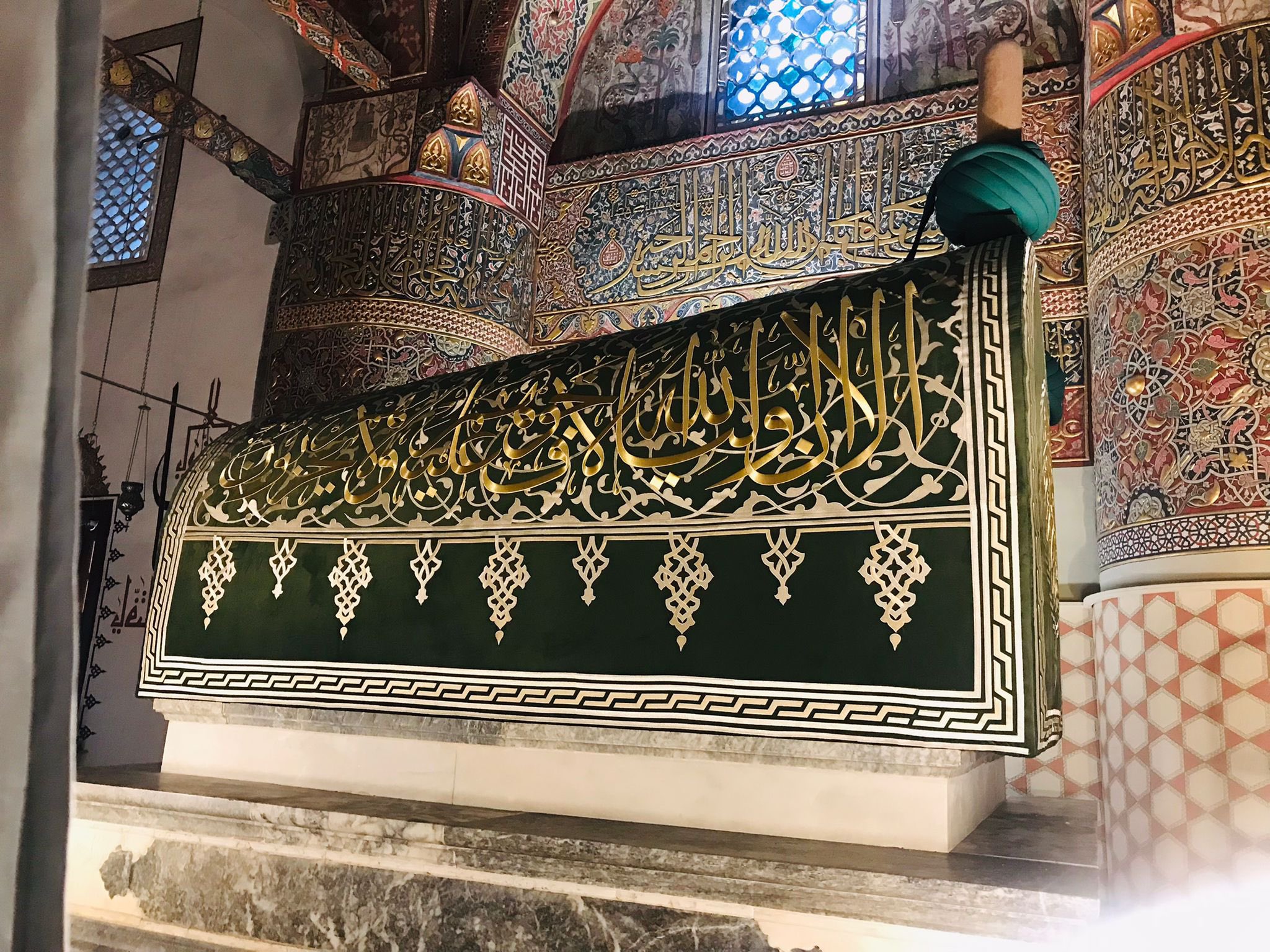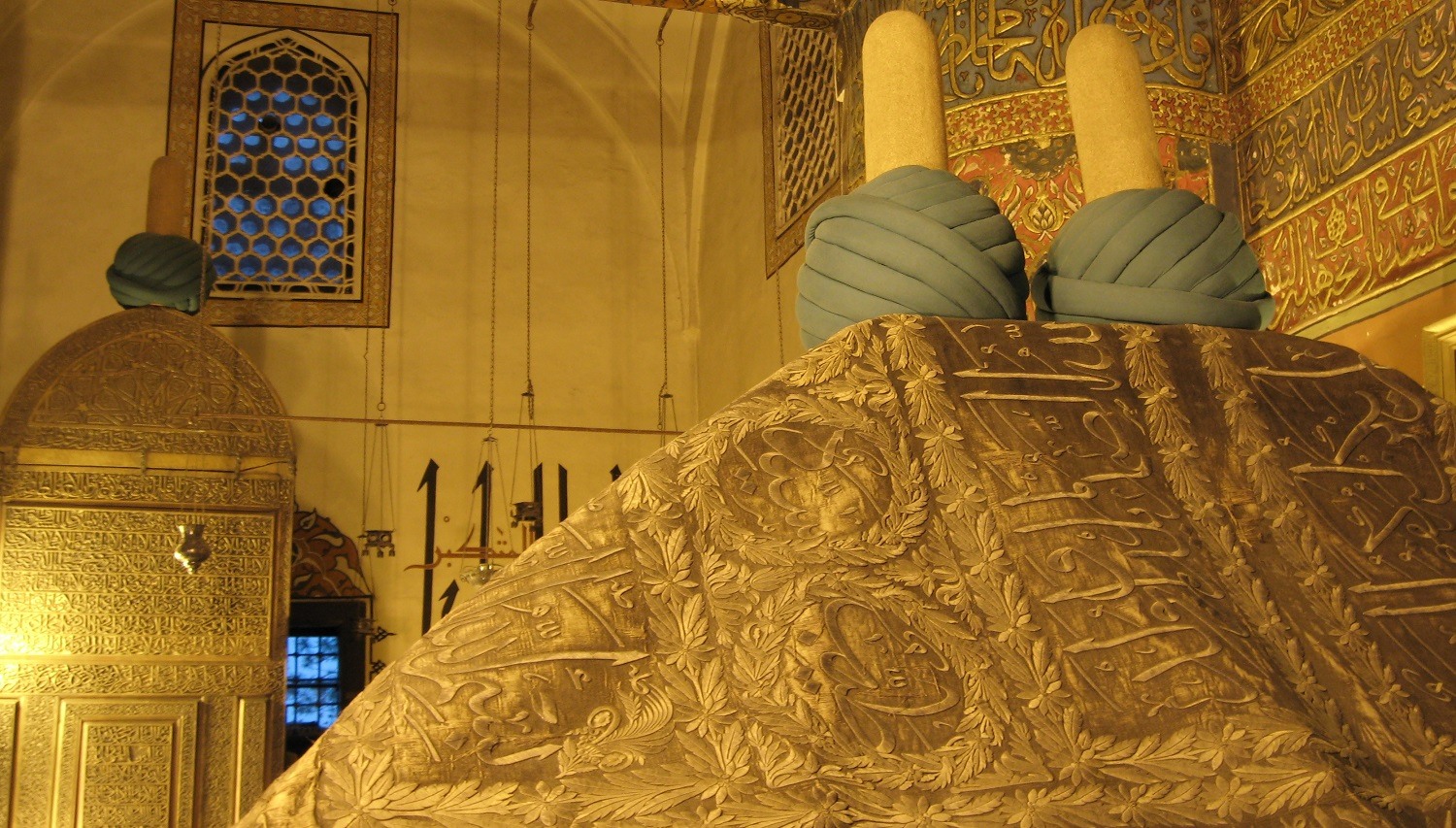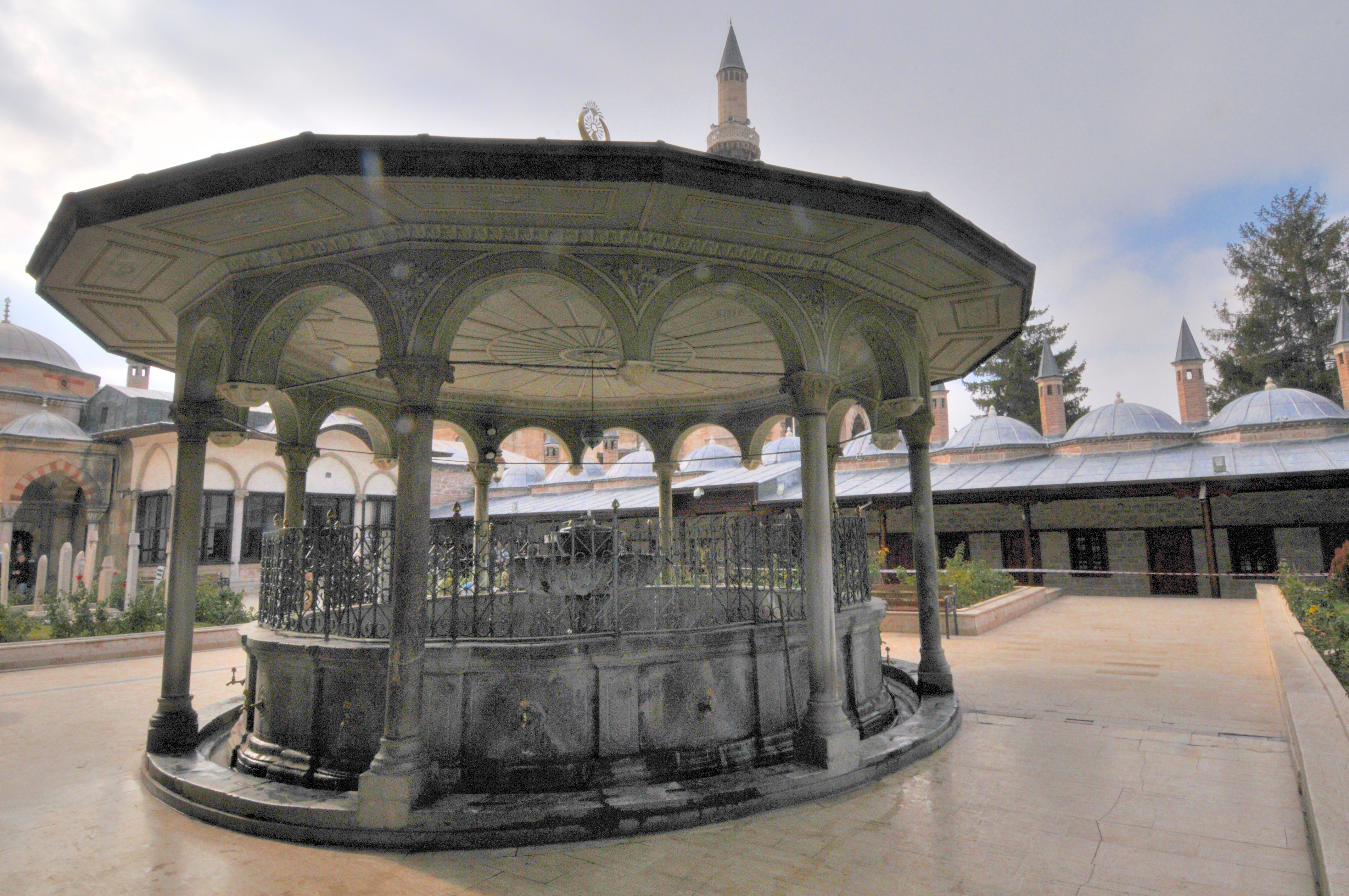You've set foot in Konya and you hear that famous call in your heart: Come, come, whoever you are. But do you really know what awaits you when you step through the gates of this spiritual center that draws millions each year? This is a sacred place, once a lush rose garden of the Seljuk Palace, gifted to Mevlana's father, which over time transformed into a dervish lodge and eventually one of Turkey's most visited museums. In this article, we will guide you not just as a tourist, but as a traveler, on the things to do in the Mevlana Museum and Mausoleum. Let's embark on this spiritual journey born from a rose garden and discover the hidden meanings in every step.
See Mevlana's Sarcophagus under the Green Dome (Kubbe-i Hadra)
The turquoise structure that catches your eye the moment you enter the museum's courtyard, the Kubbe-i Hadra or Green Dome, is the heart of your visit. But the story of this dome begins with Mevlana's humility. He opposed those who wanted to build a tomb over his father's grave, saying, Could there be a better tomb than the celestial dome? However, when he himself passed away on December 17, 1273, his son Sultan Veled honored the wishes of his followers and had the architect Bedrettin of Tabriz construct this unique structure on four massive pillars (elephant feet).
Although this dome has undergone many repairs over the centuries, it recently went through the most comprehensive restoration in its history. A load of approximately 100 tons, added through faulty reinforced concrete interventions in the 1960s, was meticulously removed, revealing the original Seljuk bricks underneath. Even more impressively, the new turquoise tiles adorning the dome were handcrafted in Konya for the first time in centuries, using traditional Iznik techniques, based on 19th-century examples from the museum archives. This was not just a repair, but a revival of a lost art.
When you step inside the tomb, into the Huzur-u Pir (Presence of the Master) section, a completely different atmosphere greets you. Behind a silver lattice stands Mevlana's sarcophagus, a masterpiece of Seljuk woodworking carved from walnut wood. The inscription at its foot contains that unforgettable phrase: He is the sultan of the scholars of the east and west. The green satin cover over the sarcophagus, called Pûşîde, is a gift from Sultan Abdülhamid II. The verses on it, embroidered with gold thread by calligrapher Hasan Sırrı Efendi, deepen the spiritual ambiance.

Examine the Dervish Cells, Manuscripts, and Mevlevi Garments
After leaving Mevlana's presence and returning to the courtyard, you are met by the silent witnesses of lodge life: the Dervish Cells. Built in 1584 by Sultan Murad III, these 17 small, domed rooms were where dervishes retreated for seclusion, study, and contemplation after their 1001-day ordeal of service in the kitchen (Matbah). The simplicity within each cell—a hearth, a divan, and small cupboards—is like tangible proof of a life purified of worldly desires. Today, these rooms are furnished with wax figures and lodge items that bring that era to life.
This spiritual education was, of course, based on a unique treasure of wisdom. Among the manuscripts displayed in the museum is the oldest copy of the Mesnevi, written just five years after Mevlana's death. This monumental work of thousands of couplets explains Sufi thought through stories, while the Divan-i Kebir, which you can also see here, contains over 40,000 poems Mevlana recited in a state of divine love. These works are not just books; they are sources of light that have inspired millions for centuries.
Another way to understand the life of the dervishes is to decipher the symbolism of their clothing. Their garments are like a walking philosophy. The tall, felt hat they wear on their heads, the Sikke, symbolizes their own tombstone. The black Hırka (cloak) on their backs is the grave itself, and during the sema ceremony, they remove this cloak to shed worldly burdens and be spiritually reborn. The wide, pure white Tennure they wear is their shroud. These clothes are symbols of negating the ego, constantly reminding the dervish of the principle to die before you die.

Feel the Spiritual Atmosphere at the Ablution Fountain (Şeb-i Arus Pool) in the Museum's Courtyard
At the final stop of your museum tour, head towards the hexagonal marble pool in the corner of the courtyard. This is the Şeb-i Arus Pool, and it's like a key to understanding the most vital point of Mevlana's philosophy. Şeb-i Arus means Wedding Night in Persian. But why would a death anniversary be called a wedding night?
Because Mevlana saw death not as an end or a separation, but as the happiest moment of reunion with his beloved, the Creator. In his own words, My death day is my wedding day. That is why for the Mevlevis, December 17th is not a day of mourning, but a festival of union celebrated with the sounds of the ney and tef, and with sema performances. This pool was once the place where dervishes gathered to celebrate this blessed wedding night.
As you stand by the pool and listen to the silence, contemplate this profound philosophy. This understanding, where even death is transformed into a celebration, elevates the Mevlana Museum from being just a tomb to a living monument that celebrates the victory of love over death. This deep philosophy makes the Mevlana Museum one of Turkey's most important faith tourism centers.

Continue Exploring in Konya
If you wish to continue exploring Konya after leaving the spiritual atmosphere of the Mevlana Museum, we have a few suggestions. To understand Mevlana, one must also understand his soulmate, Şems; therefore, be sure to visit the Şems-i Tebrizi Tomb and Mosque. To feel the spirit of the Seljuk period in which Mevlana lived, you can climb
Alaaddin Hill, a historic mound in the city center, and finally, after seeing the tiles of the Kubbe-i Hadra, you can see another marvel of Seljuk art, the Karatay Madrasa (Tiled Works Museum). After experiencing the soul of Konya, To discover other treasures of Anatolia, you can take a look at ourLocal Tours guide.
| Information Category | Details |
|---|---|
| Location | Aziziye Mah, Müzealanı Cd. No:1, 42030 Karatay/Konya |
| Entrance Fee | Generally Free (But check for special events) |
| Visiting Hours (Summer) | April 1 - October 1: 09:00 - 19:00 (Ticket Office Closes: 18:40) |
| Visiting Hours (Winter) | October 1 - April 1: 09:00 - 17:00 (Ticket Office Closes: 16:40) |
| Special Hours | During special periods like Şeb-i Arus week (December 7-17), hours may be extended until 23:00. |
| Photography Rule | Taking photos and videos is prohibited inside the tomb (Huzur-u Pir). |
| Phone | +90 332 351 12 15 |
Bibliography
For more technical information and official statements about the restoration of the Kubbe-i Hadra, you can review this article from the Republic of Turkey Directorate of Communications.
Frequently Asked Questions (FAQ)
Question 1: Is there an entrance fee for the Mevlana Museum, and is the Müzekart valid?Answer: Entrance to the Mevlana Museum is generally free. However, there may be a different policy for some special exhibitions or events within the museum. We recommend checking the official websites before your visit for the most up-to-date information.
Question 2: What are the visiting hours for the Mevlana Museum?Answer: Visiting hours vary by season. Generally, it is open from 09:00-19:00 during the summer period (April 1 - October 1) and from 09:00-17:00 during the winter period (October 1 - April 1). During special times like the Şeb-i Arus ceremonies in December, visiting hours can be extended until 23:00.
Question 3: Is it permissible to take photos inside the museum, especially in the tomb section?Answer: No. While you can take photos in the museum's courtyard, taking photos and videos inside the tomb section (Huzur-u Pir) is strictly prohibited out of respect for the spiritual atmosphere and for the preservation of the artifacts. This rule is clearly indicated on signs at the entrances.


 English
English Türkçe
Türkçe